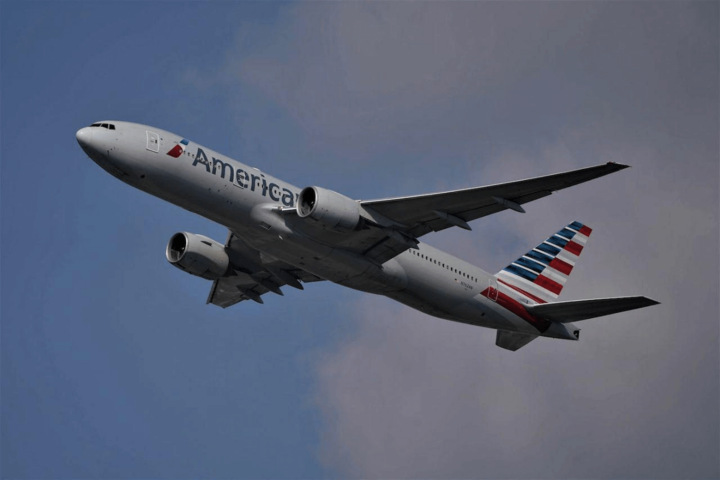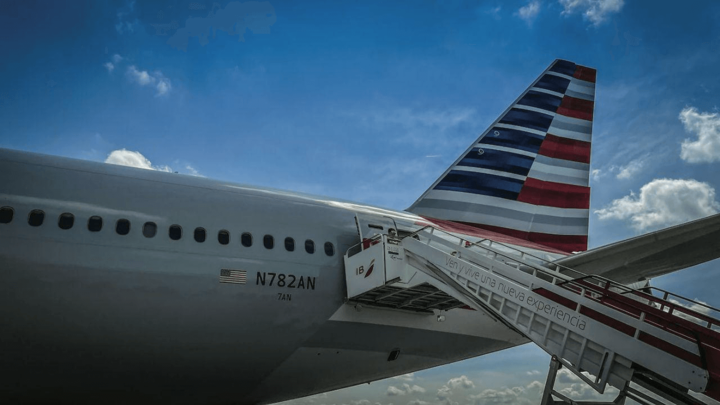Investing in the stock market can be exhilarating yet daunting as traders and investors seek to uncover opportunities with potentially significant returns. In this pursuit, it becomes crucial to stay well-informed about the market and carefully analyze the prospects of individual stocks. American Airlines Group Inc. (AAL), one of the leading names in the aviation industry, stands as an intriguing option for those looking to capitalize on the potential growth within this sector.
In this article, we delve into the world of American Airlines Group Inc. and present an overview of its stock potential, providing insights and analysis to aid in decision-making. Additionally, we explore how the trading platform VSTAR can serve as a valuable tool in harnessing the trading opportunities presented by AAL stock.
American Airlines Group Inc. Overview
American Airlines Group Inc., founded in 1926 as American Airways, has a rich history. It started with mail delivery services and later expanded to become American Airlines. The airline introduced various industry firsts like in-flight meals and electronic reservation systems. It became the world's largest airline after merging with US Airways in 2013 through acquisitions and route expansions. Despite facing economic downturns and global events, American Airlines has a market cap of 9.37 billion USD and a net income of 127 million USD. After emerging stronger from bankruptcy in 2011, it now offers domestic and international passenger and cargo services. Robert Isom is the CEO, serving since March 2022, and the company is headquartered in Fort Worth, Texas, with operations spanning mainline, regional affiliates, cargo, and other businesses.
American Airlines Group Inc.’s Business Model and Products/Services
American Airlines Group Inc. has become a significant player in the global aviation industry. As one of the largest airlines in the world, the company primarily operates a network air carrier, providing scheduled air transportation for passengers and cargo.
1. Network Carrier Model: American Airlines follows the traditional network carrier model, which revolves around a hub-and-spoke system. The company operates from key airports (hubs) where passenger and cargo traffic is consolidated before being transported to their final destinations (the spokes). This model allows for improved capacity utilization, route flexibility, and market coverage.
2. Revenue Streams: American Airlines' primary source of revenue comes from the passenger segment, which includes revenues from all passenger flights. This includes ticket fares, fees for additional services like extra baggage, preferential seating, in-flight purchases, and more. The second revenue stream is cargo transportation, where the company provides a wide variety of freight and mail services globally. Other sources of income include loyalty programs (like AAdvantage), third-party service arrangements, and the sale of fuel to third-party customers at certain locations.
3. Ancillary Revenue: In recent years, American Airlines, like many other airlines, has significantly increased its ancillary revenue, which comes from non-ticket sources like baggage fees, onboard food and beverages, access to onboard WiFi, and more. The company's AAdvantage program, with partnerships with various hotels, rental car companies, and retail outlets, is also a significant source of ancillary revenue.
4. Partnerships and Alliances:American Airlines is a founding member of the OneWorld alliance, which includes several international airlines. These strategic alliances allow it to provide service to numerous destinations worldwide, expanding its network and market presence. These partnerships also extend to code-sharing agreements, enabling airlines to sell seats on each other's flights and share revenues.

SOURCE: UNSPLASH
American Airlines Group Inc.'s primary products and services include:
1. Passenger Air Travel:The core service of American Airlines is passenger transportation. The company offers multiple classes of travel, including Economy, Premium Economy, Business, and First Class, each with varying levels of service and comfort.
2. Cargo Transport: American Airlines provides cargo transportation services to more than 150 countries worldwide. They transport various types of cargo, including mail, perishables, live animals, general cargo, and more.
3. Loyalty Programs:The AAdvantage program is the airline's loyalty program, offering members the opportunity to earn miles for flying with American Airlines, OneWorld Airlines, and other partners. These miles can be redeemed for flights, upgrades, car rentals, hotel stays, and other products and services.
4. In-Flight Services:American Airlines offers various in-flight services, such as food and beverages, in-flight entertainment, Wi-Fi connectivity, and duty-free shopping, depending on the flight duration and class of service.
5. Credit Card Partnerships:American Airlines partners with financial institutions to offer co-branded credit cards. Cardholders can earn miles on purchases and enjoy exclusive benefits such as priority boarding, free checked bags, and in-flight discounts.
6. Travel Extras:The company also offers travel insurance, pet travel, unaccompanied minor service, and special assistance for passengers with specific needs. They also allow passengers to buy carbon offsets to compensate for their travel's environmental impact.
American Airlines Group Inc.’s Financials, Growth, and Valuation Metrics

SOURCE: UNSPLASH
American Airlines Group has experienced impressive revenue growth over the past five years. The company bounced back strongly after a significant decline in 2020 due to the pandemic. For the twelve months ending March 31, 2023, revenue reached $52.261 billion, representing a 50.29% increase year-over-year. The profit margin is 3.39%, indicating modest profitability. American Airlines Group prioritised strengthening its balance sheet and ended the quarter with around $14.4 billion in total available liquidity. This strong liquidity position provides stability and flexibility for the company's operations and future growth.
As of May 28, 2023, American Airlines Group (AAL) has a forward price-to-earnings (P/E) ratio of 5.33, which is lower than the forward P/E ratios of Southwest Airlines and Delta Air Lines. This indicates that investors are willing to pay less for each dollar of earnings from American Airlines Group compared to its industry peers.
Therefore, based on the forward P/E ratio comparison, American Airlines Group is undervalued compared to its competitors. However, it's essential to consider other factors and conduct a comprehensive american airlines stock analysis before investing.
AAL Stock Trading Information
American Airlines Group Inc. (AAL) was listed on the NASDAQ stock exchange on December 9, 2013, with the ticker symbol "AAL." It is primarily traded during regular market hours from 9:30 AM to 4:00 PM Eastern Time, Monday through Friday. AAL also has pre-market trading from 4:00 AM to 9:30 AM and after-market trading from 4:00 PM to 8:00 PM, although liquidity may be lower during these sessions. Following a merger in 2013, American Airlines conducted an initial public offering (IPO) for $25 (£19) per share.
American Airlines stock dividend payments were suspended in 2020 due to the impact of the COVID-19 pandemic, and as of May 25, 2023, the current TTM dividend payout for American Airlines Group (AAL) is $0.00.
Over the past month, AAL shares have lost 6.2%. Analysts expect AAL to report earnings of $0.03 per share, with a year-over-year growth of 101.29%. Revenue is projected to be $12.23 billion, up 37.45% from the previous year. Full-year estimates suggest earnings of $2.55 per share and revenue of $53.7 billion, representing significant changes from the previous year. Positive estimate revisions by analysts reflect optimism about the company's business and profitability. Investors can consider the Zacks Rank as a rating system. It's important to conduct thorough research before making investment decisions.
Overview of AAL Stock Performance

SOURCE: UNSPLASH
The International Air Transport Association (IATA) predicts that the global aviation industry will experience a net profit of $4.70 billion this year, driven by a surge in demand as travel restrictions gradually ease. The industry is expected to exceed 4 billion passengers, indicating a significant increase in the number of travelers.
In the first fiscal quarter of 2023, AAL achieved record operating and free cash flow of $3.30 billion and $3 billion, respectively. The company is focused on strengthening its balance sheet and has made progress in reducing its total debt by approximately 60% of its target of $15 billion by the end of 2025. AAL expects its adjusted earnings per share for the second quarter of 2023 to be in the range of $1.20 to $1.40, based on the current fuel price and the company's stock forecast. The projected adjusted earnings per share for the entire year of 2023 are anticipated to be between $2.50 and $3.50.
As of May 25, 2023, AAL's stock has experienced a year-to-date increase of 8.5% and a 3.6% rise over the past month. The stock closed the most recent trading session at $14.35.
Risks and Opportunities
One of the significant risks facing American Airlines Group Inc. is intense competition within the airline industry. The airline industry is highly competitive, with numerous major players vying for market share. American airlines competitors such as Delta Air Lines, United Airlines, and Southwest Airlines threaten the company's market position and profitability.
These competitors can attract customers away from American Airlines by offering lower fares, superior services, or more extensive route networks. Emerging low-cost carriers and regional airlines also contribute to the competitive landscape, providing travelers with alternative options.
To mitigate this risk, American Airlines must maintain a strong brand image, improve customer experience, and implement effective pricing strategies. It should also continuously invest in fleet modernization, operational efficiency, and innovative technologies to enhance its competitive advantage.
American Airlines Group Inc. faces several other risks in addition to competitive risk:
1. Fuel Price Volatility:Fluctuations in fuel prices can impact operating costs and profitability. Hedging strategies and fuel-efficient aircraft can help mitigate this risk.
2. Economic Factors: Changes in economic conditions, recessions, or shifts in consumer spending patterns can reduce demand for air travel, affecting revenue. Adapting to economic changes is essential.
3. Regulatory Environment:Changes in regulations, safety requirements, security protocols, and international trade agreements can impact operations and costs. Staying compliant and engaging in advocacy efforts is essential.
4. Security and Safety Concerns:Risks related to terrorism, cybersecurity breaches, and accidents must be managed through strict security measures, safety protocols, and cybersecurity infrastructure.
Growth Opportunities
American Airlines Group Inc. has opportunities to capitalize on the following:
1. Growing Travel Demand:Expanding routes, targeting emerging markets, and forming strategic partnerships to capture market share in a continuously growing travel industry.
2. Ancillary Revenue Streams: Leveraging baggage fees, onboard sales, and loyalty programs to boost overall revenue and explore new revenue streams.
3. Technology Advancements:Utilizing advanced reservation systems, digital platforms, and personalized customer experiences to enhance operational efficiency and customer satisfaction.
4. Environmental Sustainability:Embracing fuel-efficient aircraft, investing in renewable energy, and implementing eco-friendly practices to enhance brand reputation, attract environmentally conscious travelers, and reduce carbon footprint.
5. By seizing these opportunities, American Airlines can enhance its competitiveness and drive long-term success in the airline market.
Future Outlook and Expansion
American has significantly improved its credit profile over the past year, with strong demand for domestic passenger travel driving higher earnings and cash flow in 2022. This trend is expected to continue in 2023. The company's FFO-to-debt ratio was 9%, nearing the threshold for a higher rating, and is projected to reach 15% this year. American's shift in capacity to more profitable routes has contributed to higher returns, and its ASMs are approaching pre-pandemic levels.
Despite historically high jet fuel prices, the company achieved an adjusted EBITDA margin of 12.5%. Both domestic and international operations drove revenue growth of almost $20 billion. Overall, American's credit profile is expected to improve further in 2023 due to strong demand and ongoing efforts to reduce debt.
How to Invest in AAL Stock
To invest in american airlines stock, you can utilize different methods such as holding the shares, options, or contracts for difference (CFDs). Here's a brief overview of each method:
- Holding the Shares:
● Purchasing shares: You can buy AAL shares through a brokerage account. Look for a reputable brokerage platform that offers access to stock markets.
● Research and analysis: Conduct thorough research on AAL and the aviation industry before investing. Consider factors like financial performance, market trends, and American airlines news that may impact the stock's price.
● Long-term approach: Holding shares involves buying and owning the stock for an extended period to benefit from potential price appreciation and dividends.
Example: Let's say you purchase 100 shares of AAL for $20 per share. If AAL stock price increases to $30 per share, your investment would be worth $3,000, providing a $1,000 profit (excluding transaction costs).
- Options:
● Call options: A call option gives you the right, but not the obligation, to buy AAL shares at a specified price (strike price) within a specific timeframe.
● Put options: A put option provides the right, but not the obligation, to sell AAL shares at a predetermined price within a given time frame.
● Speculative or hedging: Options can be used for speculation or as a hedge against potential price movements.
Example: Suppose you buy a call option with a strike price of $25 for a premium of $2 per share. If the American Airlines stock rises above $27 before the option expiration, you can exercise your option to buy the shares at $25 and potentially profit from the price difference.
- Contracts for Difference (CFDs):
● CFD trading: CFDs allow you to speculate on the price movements of AAL shares without owning the actual shares. It involves agreeing with a broker to exchange the difference in AAL stock price between the contract's opening and closing.
● Leverage: CFDs often provide leverage, allowing you to trade with a smaller initial investment. However, it's essential to understand the risks involved with leveraged trading.
Example: Let's say you open a CFD position on AAL with a leverage ratio of 1:10. If aal stock price increases by 5% and you invest $1,000, your profit would be $500 (excluding fees and overnight financing costs).
Remember, investing in stocks involves risk, and it's crucial to do thorough research and consider your risk tolerance before you invest in american airlines stock. Consulting with a financial advisor or broker can provide personalized guidance based on your financial situation and investment goals.
Why trade AAL Stock CFD with VSTAR
Trading AAL stock CFD with VSTAR offers benefits such as diversification, access to volatility and liquidity, trading opportunities, leveraged trading, flexibility, and accessibility. By combining AAL stock with VSTAR, traders can diversify their portfolios, capitalize on price movements, and enjoy the advantages of leveraged trading. VSTAR's platform provides tools for technical and fundamental analysis, making it easier to make informed trading decisions. However, traders should exercise caution and implement risk management strategies when trading with leverage. Overall, trading AAL stock CFD with VSTAR can be a viable option for those seeking opportunities in the financial markets.
How to Trade AAL Stock CFD with VSTAR – Quick Guide
To trade American Airlines stock CFDs with VSTAR, follow these steps:
● Open an account with VSTAR and complete the verification process.
● Deposit funds into your trading account.
● Understand CFDs, which are derivative products for speculating on price movements.
● Research AAL, considering financials, industry trends, and american airlines news.
● Analyze the markets using technical and fundamental analysis.
● Choose VSTAR's user-friendly trading platform.
● Place your trade by selecting AAL stock CFDs, specifying contract quantity, and setting entry/exit points.
● Monitor and manage your trades, adjusting stop-loss and take-profit levels.
● Implement risk management techniques; don't risk more than you can afford to lose.
● Stay informed about market news and industry developments.
Conclusion
American Airlines Group Inc. (NASDAQ: AAL) has undergone a significant journey to reposition itself for the future. Despite the challenges posed by the COVID-19 pandemic, the company has made strides in adapting and improving. American Airlines has focused on optimizing its fleet and network, enhancing the customer experience, and prioritizing sustainability. While the recovery of the aviation industry remains uncertain, American Airlines' strategic initiatives and long-term sustainability efforts make it an intriguing prospect for investors. By carefully managing capacity, investing in technology, and addressing environmental concerns, the company aims to emerge stronger and more resilient.




